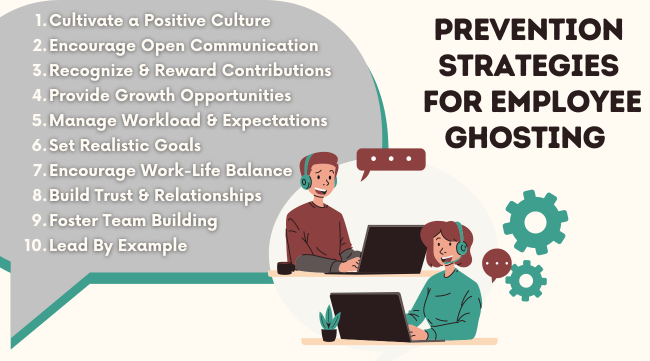
In today’s dynamic work environment, the phenomenon of employee ghosting—where employees suddenly cut off all communication with their employers—has become increasingly common. Just like the romantic ghosting we hear about in dating, this workplace version can leave managers and teams feeling bewildered and frustrated. The good news is that effective strategies can help prevent it from happening in your organization. This article explores practical ways to enhance workplace culture and reduce the chances of being ghosted.
Understanding Employee Ghosting
Before we delve into prevention strategies, we must understand why ghosting happens in the workplace. Ghosting commonly occurs due to a lack of engagement, poor management practices, or unresolved issues. Employees may feel undervalued, overworked, disconnected, and unsure of how to express their struggles. Recognizing these underlying issues is the first step in preventing ghosting.
1. Cultivate a Positive Workplace Culture
One of the most effective ways to prevent employee ghosting is to cultivate a positive workplace culture. This involves fostering an environment where employees feel valued, respected, and connected.
2. Encourage Open Communication
Establishing open lines of communication is crucial. Encourage employees to share their thoughts, ideas, and concerns without fear of retribution. Regular check-ins, feedback sessions, and anonymous surveys can help create a culture where employees feel comfortable speaking up. Remember, the goal is to listen actively and address any concerns promptly.
3. Recognize and Reward Contributions
People want to feel appreciated for their hard work. Implement recognition programs that highlight employees’ achievements. Public acknowledgments, awards, or simple thank-you notes will go a long way. When employees feel their contributions are valued, they are less likely to disengage.
4. Provide Growth Opportunities
Investing in employees’ professional development can significantly reduce the chances of ghosting. Offer training programs, mentorship opportunities, and pathways for career advancement. When employees see that their organization is committed to their growth, they are more likely to stay engaged and loyal.
5. Manage Workload and Expectations
A common trigger for ghosting is an overwhelming workload. When employees feel like they are drowning in tasks, it can lead to burnout and disengagement. Establish one-on-one meetings to stay aware of your employee’s workload and help to ensure what they have on their plate is manageable.
6. Set Realistic Goals
Work with employees to set achievable goals and deadlines and ensure that workload expectations align with employees’ capacities. When they have a clear understanding of their responsibilities and see that their managers respect their time, they are less likely to feel overwhelmed.
7. Encourage Work-Life Balance
Promoting a healthy work-life balance is vital. Encourage employees to take regular breaks, utilize their vacation days, and disconnect after hours. A culture that respects personal time fosters loyalty and reduces the chances of ghosting.
8. Build Trust and Relationships
Establishing trust is key to preventing ghosting. When employees feel a strong connection with their managers and coworkers, they are less likely to disappear without explanation.
9. Foster Team Building
Organize team-building activities that allow employees to connect on a personal level. Whether through virtual meetups, retreats, or informal gatherings, these opportunities help build rapport and camaraderie, making it easier for employees to approach management when concerns arise.
10. Lead by Example
As a leader, your behavior sets the tone for the entire team. Be transparent, approachable, and supportive. Show vulnerability and encourage others to do the same. When employees see that leadership values authenticity, they will feel more inclined to express their thoughts and concerns.

While employee ghosting is an unfortunate trend in today’s workplace, it’s not inevitable. By fostering a positive culture, managing workloads, and building trust, employers can create an environment where employees feel connected and valued. The key is to remain proactive and attentive to your team’s needs. By doing so, you’ll not only reduce the chances of ghosting but also cultivate a more engaged and motivated workforce. Ultimately, a thriving workplace benefits everyone, leading to higher productivity, better morale, and reduced turnover.
For more information on engaging your employees, subscribe to The JOHNLEONARD Blog
